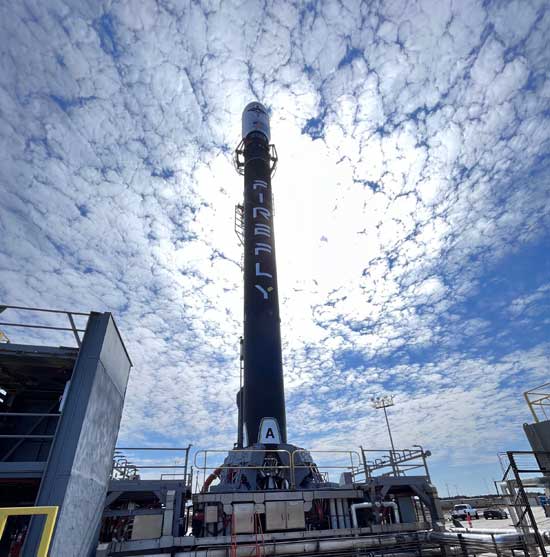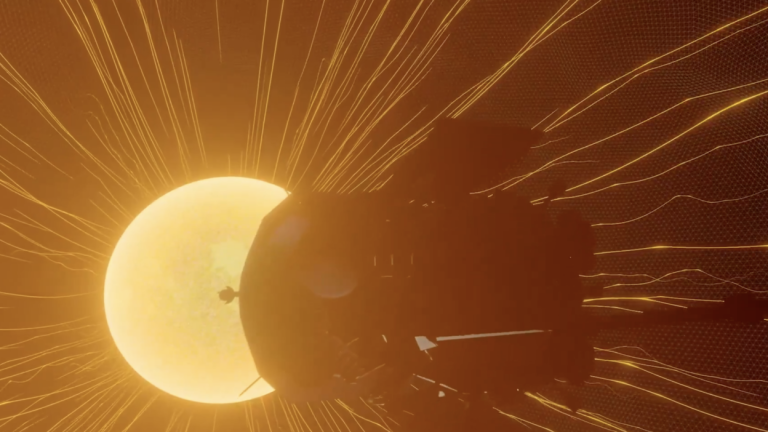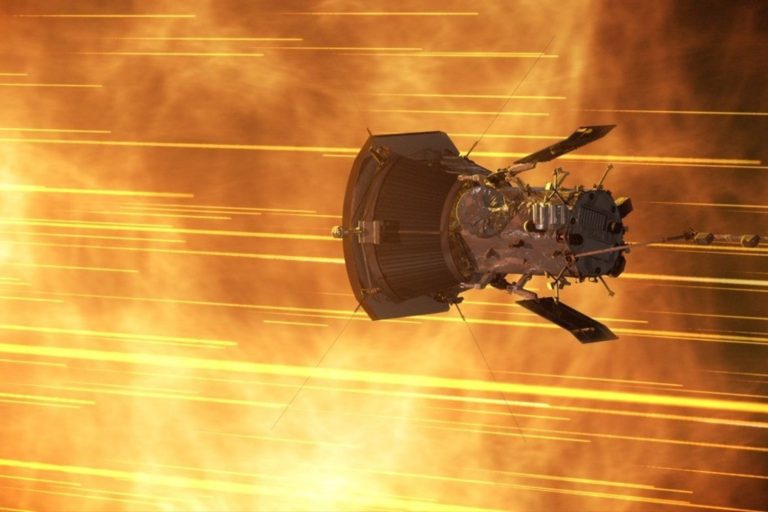
Firefly Rocket Shuts Down After Ignition as Launch Attempt Aborted (Image Credit: Payload)

VANDENBERG SPACE FORCE BASE, Calif. — Firefly Aerospace’s attempt to launch its Alpha rocket fizzled as the booster’s first stage engines shut down immediately after ignition early Friday morning.
“The vehicle went into auto abort after ignition. This is designed into the system to ensure safety. The team scrubbed tonight’s launch attempt and is reviewing data to determine our next launch window,” the company tweeted after the abort at Vandenberg Space Force Base in California.
Firefly has provided no further details on the cause of the abort, nor did has it indicate when it might make another launch attempt. Firefly has a two-hour launch window starting at midnight on Saturday.
Alpha is carrying eight small satellites and a capsule with postcards on a rideshare flight.
Firefly Alpha Launch No. 2 Payloads
| Satellite | Type | Organization(s) | Purpose |
|---|---|---|---|
| TechEdSat-15 (TES-15) | CubeSat | NASA Ames/San Jose State University | Technology demonstration |
| TIS Serenity | CubeSat | Teachers in Space, Inc. | Education |
| PicoBus | PocketQube | Libre Space Foundation | PocketQube deployer |
| FOSSASAT-1B | PocketQube | FOSSA Systems | Technology demonstration |
| GENESIS-L | PocketQube | AMSAT-EA | Amateur radio |
| GENESIS-N | PocketQube | AMSAT-EA | Amateur radio |
| QUBIK-1 | PocketQube | Libre Space Foundation | Technology demonstration |
| QUBIK-2 | PocketQube | Libre Space Foundation | Technology demonstration |
| Firefly capsule | Capsule | Firefly Aerospace | 128 postcards |
Firefly aborted a launch attempt in the final minute on Sept. 11 due to a drop in helium pressure in Alpha’s second stage. Bad weather further delayed the launch until today.
Firefly is hoping the second launch of its Alpha booster is the charm. The first attempt failed in September 2021 when a first-stage engine shut down after liftoff from Vandenberg.
Firefly has said Alpha will be capable of launching 1,170 kg (2,579 lb) to a 200-km (124-mile) high low-Earth orbit (LEO) or 745 kg (1,642 lb) to a 500-km (311-mile) high sun-synchronous orbit (SSO). The company plans to upgrade the booster’s capacity to 860 kg (1,896 lb) to LEO and 1,375 kg (3,031 lb) to SSO in June 2023.








